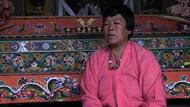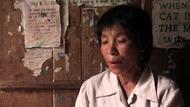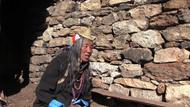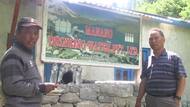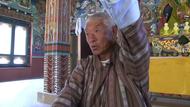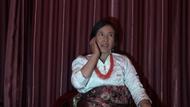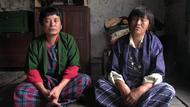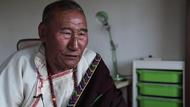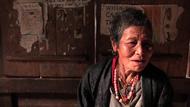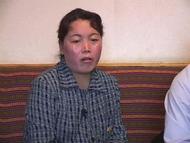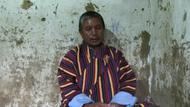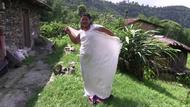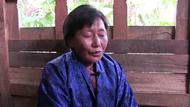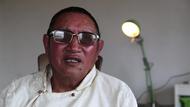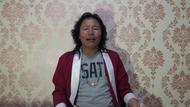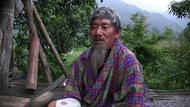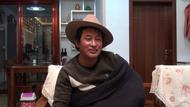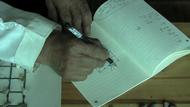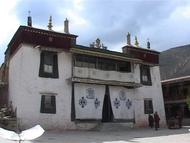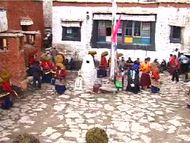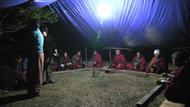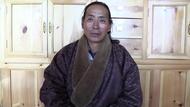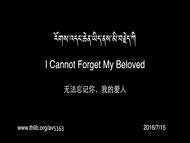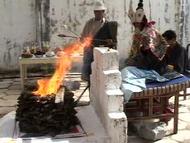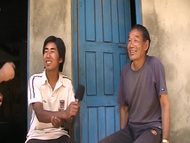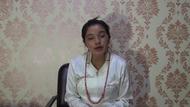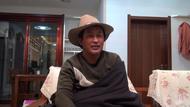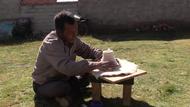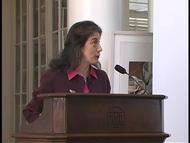Explore An Interview with Lodrö Püntsok on the Local History of Degé
Rating
Video Overview
In this video, Lodrö Püntsok gives a brief introduction to the history of Degé and the Meshö Valley.
བརྙན་ཐུང་འདིར་བློ་གྲོས་ཕུན་ཚོགས་ལགས་ཀྱིས་སྡེ་དགེའི་ལོ་རྒྱུས་དང་འབྲེལ་ཏེ་རྨེ་ཤོད་ལུང་པའི་ལོ་རྒྱུས་མདོར་བསྡུས་ཤིག་ངོ་སྤྲོད་གནང་ཡོད།
Over a thousand years ago, Degé was under King Gesar of Ling. In 1446, a daughter of Ling was given as a bride to Trashi Sengé along with the area of today’s Degé County, which became the capital of Degé. In 1640, the Meshö Valley also became incorporated into the Degé realm. Dzongsar Monastery was founded in the Meshö Valley in 746, initially as a Bön monastery, then Nyingma, and Kadam. In 1270, on his way to China, Drogön Pakpa converted it to Sakya. Since that time, it has been a seat of the Sakya. In the arts, the so-called Kentsé-style of bronze emerged, as well as religious artists who were mask makers, ceramicists, sculptors, and blacksmiths. In Tibetan medicine, there were many who became the personal physician of the Degé King.
ལོ་ཆིག་སྟོང་ལྷག་གི་ཡར་སྔོན་ལ་སྡེ་དགེའི་ཡུལ་ཕྱོགས་ཐམས་ཅད་གླིང་གེ་སར་རྒྱལ་པོའི་མངའ་ཁོངས་ཡིན་པ་རེད། སྤྱི་ལོ ༡༤༤༦ ལོར་གླིང་དཔོན་ཚང་གི་བུ་མོ་ཞིག་བཀྲ་ཤིས་སེང་གེ་ལ་ཆུང་མར་བྱིན་པ་དང་། ད་ལྟའི་སྡེ་དགེ་རྫོང་སྟེ་སྡེ་དགེའི་རྒྱལ་ས་ཆགས་སའི་ས་ཁོངས་ངེས་ཅན་ཞིག་ཁོང་ལ་བྱིན་པ་རེད། སྤྱི་ལོ ༡༦༤༠ ལོར་རྨེ་ཤོད་ཀྱི་ལུང་པ་ཡང་དགེ་སྡེའི་མངའ་ཁོངས་སུ་གྱུར་པ་རེད། རྨེ་ཤོད་ཀྱི་ལུང་པ་ནས་རྫོང་གསར་དགོན་པ་སྤྱི་ལོ ༧༤༦ ལོར་ཕྱག་བཏབ་པ་དང་། སྤྱི་ལོ ༡༢༧༠ ལོར་འགྲོ་མགོན་འཕགས་པ་རྒྱ་ནག་ཏུ་ཕེབས་སྐབས་འདིར་ཕེབས་ཏེ་ས་སྐྱར་བསྒྱུར་བ་དང་། ད་བར་ས་སྐྱ་བའི་གདན་ས་རེད། བཟོ་རིག་པའི་ཕྱོགས་ནས་མཁྱེན་ལུགས་ཞེས་པའི་ལི་མ་དེའི་སྐོར་བྱུང་བ་དང་། ལྷ་སྐུ་བཟོ་མཁན་མང་པོ་ཞིག་བྱུང་བ་དང་། གསོ་བ་རིག་པའི་ཆ་ནས་སྡེ་དགེ་རྒྱལ་པོའི་བླ་སྨན་མཛད་མྱོང་མཁན་གྱི་བླ་སྨན་མང་པོ་བྱུང་མྱོང་བ་རེད།
In this video, Lodrö Püntsok gives a brief introduction to the history of Degé and the Meshö Valley. About a thousand years ago, all of Degé was under the control of King Gesar of Ling, and as such was recognized as a territory of Ling. In 1446, a daughter of the ruling house of Ling was given as a bride to one called Trashi Sengé along with the area of today’s Degé county, which became the capital of Degé. After that, over about two hundred years, his descendants gradually expanded the territory. In 1640, during the time of the great Degé master, Jampa Püntsok, the Meshö Valley also became incorporated into the Degé realm. In terms of the origin of Degé’s name, it was previously called a district (Tib. yul sde) of Ling. Later, the lands here took on the name of the ruling family and thus the territories of the Degé King were called Degé. In terms of the Meshö Valley, Dzongsar Monastery was founded here. According to ancient histories, Dzongsar Monastery was established in 746, initially as a Bön monastery, then Nyingma, and Kadam. In 1270, on his way to China, Drogön Pakpa passed through and converted it to Sakya. Since that time, it has been a seat of the Sakya. Jamyang Kentsé Wangpo’s biography gives a brief account of how activities of the great masters of this area developed after this. In the field of artisanship, the so-called Kentsé-style of bronze emerged, as well as religious artists who were mask makers, ceramicists, sculptors, blacksmiths, and many more. In terms of Tibetan medicine, there were many who became the personal physician of the Degé King, such as Lamen (court physician) Chödrak Gyaltsen, Lamen Rinchen Öser, Lamen Kunga Püntsok, and Lamen Kunga Sengge. All of them also received the kindness of the Jamyang Kentsé Wangpo and the spiritual forefathers and the Meshö Valley has also been blessed by this splendid culture.
བརྙན་ཐུང་འདིར་བློ་གྲོས་ཕུན་ཚོགས་ལགས་ཀྱིས་ཁམས་ཕྱོགས་སྡེ་དགེའི་ལོ་རྒྱུས་དང་འབྲེལ་ཏེ་རྨེ་ཤོད་ལུང་པའི་གནའ་དེང་གི་ལོ་རྒྱུས་མདོར་བསྡུས་ཤིག་ངོ་སྤྲོད་གནང་ཡོད་ལ། དེ་ཡང་གནའ་སྔ་མོ་ལོ་ཆིག་སྟོང་ལྷག་གི་ཡར་སྔོན་ལ་སྡེ་དགེའི་ཡུལ་ཕྱོགས་ཐམས་ཅད་གླིང་གེ་སར་རྒྱལ་པོའི་མངའ་ཁོངས་ཡིན་པས། གླིང་གི་ཡུལ་སྡེ་རུ་ངོས་འཛིན་པ་རེད། སྤྱི་ལོ ༡༤༤༦ ལོར་གླིང་དཔོན་ཚང་གི་བུ་མོ་ཞིག་བཀྲ་ཤིས་སེང་གེ་ཟེར་བ་ཞིག་ལ་ཆུང་མར་བྱིན་པ་དང་། ད་ལྟའི་སྡེ་དགེ་རྫོང་སྟེ་སྡེ་དགེའི་རྒྱལ་ས་ཆགས་སའི་ས་ཁོངས་ངེས་ཅན་ཞིག་ཁོང་ལ་བྱིན་པ་རེད། དེའི་རྗེའི་ལོ་ངོ་ཉིས་བརྒྱའི་རིང་ལ་ཁོང་གི་ཁྱིམ་བརྒྱུད་ཀྱིས་རིམ་བཞིན་མངའ་ཁོངས་རྒྱ་བསྐྱེད་པ་དང་། སྡེ་དགེའི་བླ་ཆེན་བྱམས་པ་ཕུན་ཚོགས་ཀྱི་སྐབས་ཀྱི་སྤྱི་ལོ ༡༦༤༠ ལོར་རྨེ་ཤོད་ཀྱི་ལུང་པ་ཡང་དགེ་སྡེའི་མངའ་ཁོངས་སུ་གྱུར་པ་རེད། སྡེ་དགེའི་མིང་གི་འབྱུང་ཁུངས་ཀྱི་ཆ་ནས། སྔོན་མ་གླིང་གི་ཡུལ་སྡེ་ཞེས་འབོད་པ་དང་། རྗེས་སུ་ཡུལ་ཕྱོགས་འདིར་དབང་བསྒྱུར་མཁན་གྱི་ཁྱིམ་ཚང་གི་མིང་ལས་འཕྲོས་ཏེ་སྡེ་དགེ་རྒྱལ་པོའི་མངའ་ཁོངས་ཐམས་ཅད་ལ་སྡེ་དགེ་ཞེས་འབོད་པ་རེད། རྨེ་ཤོད་ཀྱི་ལུང་པ་འདིར་མཚོན་ན། རྫོང་གསར་དགོན་པ་ཞེས་པ་ཞིག་ཆགས་ཡོད་པ་དང་། སྔོན་གྱི་ལོ་རྒྱུས་ལྟར་ན་རྫོང་གསར་དགོན་པ་འདི་ནི་སྤྱི་ལོ ༧༤༦ ལོར་ཕྱག་བཏབ་པར་གྲགས་པ་དང་། དགོན་པ་འདི་དང་པོ་བོན་གྱི་དགོན་པ་ཡིན་པ་དང་། དེ་ནས་རྙིང་མ་དང་། བཀའ་གདམས། སྤྱི་ལོ ༡༢༧༠ ལོར་འགྲོ་མགོན་འཕགས་པ་རྒྱ་ནག་ཏུ་ཕེབས་སྐབས་འདིར་ཕེབས་ཏེ་ས་སྐྱར་བསྒྱུར་བ་དང་། དེ་ནས་བཟུང་ད་ལྟའི་བར་དུ་དཔལ་ལྡན་ས་སྐྱ་བའི་གདན་ས་རེད་ཅེས་གསུངས་ཡོད། དེའི་རྗེས་སུ་འཇམ་དབྱངས་མཁྱེན་བརྩེའི་དབང་བོའི་རྣམ་ཐར་དང་མཛད་འཕྲིན་གྱི་ཆ་མདོར་བསྡུས་ཤིག་གསུངས་ཡོད་པ་དང་། ཡུལ་འདིའི་བླ་ཆེན་རྣམས་དང་ལྷན་དུ་མཛད་འཕྲིན་ཅི་ལྟར་སྤེལ་བའི་སྐོར་ཡང་མདོར་བསྡུས་སུ་གསུངས་ཡོད། བཟོ་རིག་པའི་ཕྱོགས་ནས་ཀྱང་མཁྱེན་ལུགས་ཞེས་པའི་ལི་མ་དེའི་སྐོར་བྱུང་བ་དང་། བཟོ་རིག་པའི་ཆ་ནས་ལྷ་སྐུ་བཟོ་མཁན་གྱི་འབག་བཟོ་དང་། རྫ་བཟོ། ལྷ་བཟོ། མགར་བ་སོགས་མང་པོ་ཞིག་བྱུང་བ་དང་། གསོ་བ་རིག་པའི་ཆ་ནས་སྡེ་དགེ་རྒྱལ་པོའི་བླ་སྨན་མཛད་མྱོང་མཁན་གྱི་བླ་སྨན་ཆོས་གྲགས་རྒྱལ་མཚན་དང་། བླ་སྨན་རིན་ཆེན་འོད་ཟེར། བླ་སྨན་ཀུན་དགའ་ཕུན་ཚོགས། བླ་སྨན་ཀུན་དགའ་སེང་གེ་ཟེར་པ་མིང་གྲགས་ཅན་བླ་སྨན་མང་པོ་བྱུང་མྱོང་བ་རེད། འདི་ཐམས་ཅད་ཀྱང་འཇམ་དབྱངས་མཁྱེན་དབང་བོ་སོགས་བླ་མ་གོང་མ་རྣམས་ཀྱི་སྐུ་དྲིན་ལས་བྱུང་བ་དང་། རྨེ་ཤོད་ལུང་པ་འདིའི་རིག་གནས་ཆ་ནས་ཀྱང་ཤིན་ཏུ་ཕུན་སུམ་ཚོགས་པར་གྱུར་བ་རེད།
- Degé
places 23730For more information about this term, see Full Entry below.
Feature Type Cultural Region
 Loading ...
Loading ... - Kham
subjects 6044For more information about this term, see Full Entry below.
- Places in Kham
subjects 6050For more information about this term, see Full Entry below.
- Degé
places 23730For more information about this term, see Full Entry below.
Feature Type Cultural Region
- Kham-Hor Group
subjects 653For more information about this term, see Full Entry below.
- དྲི་བ་དྲིས་ལན
terms 94525Wyliedri ba dris lan/For more information about this term, see Full Entry below.
Terms dadri mnyam pa/
